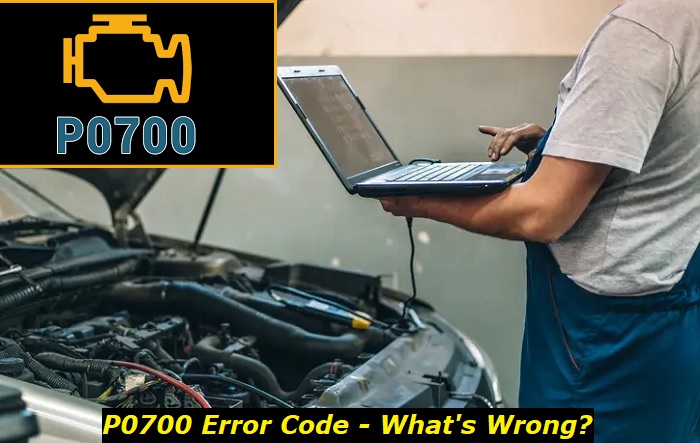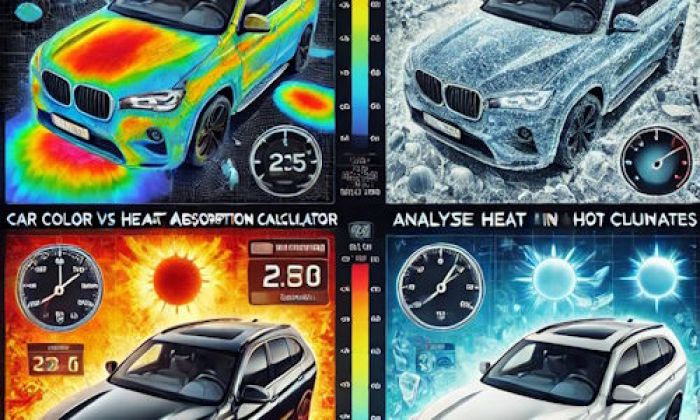When it comes to diagnosing and fixing a P0700 Transmission Control System (MIL Request) Error Code, it is important to have an understanding of the code. The P0700 code can be caused by several different issues, and some of them may require professional help from an experienced technician. So let's look at the possible causes and solutions.
P0700 code highlights
- Level of urgency:High
- Possible culprits:TCU, transmission
- Price for repair:$350 - $4,500
- If neglected:Transmission death, TCU death
- DIY repairs:Impossible
- Can you drive?Very carefully

What is the P0700 code, and what does it mean for your car?
The P0700 code stands for "Transmission Control System (MIL Request)" and indicates a malfunction in the transmission control module. It is usually associated with a vehicle that has been driven hard or not maintained properly.
What is the transmission control module?
The Transmission Control Module (TCM) is an on-board computer that monitors and controls the transmission in a vehicle. It interacts with other systems, such as the engine control module, to optimize shift points and other driving conditions.
The TCM also monitors inputs from sensors located within the transmission to make sure it's operating correctly and safely. The TCM can detect potential problems before they become more serious, allowing for earlier and easier repairs. Additionally, the TCM may be used to customize shift points or other settings for better performance or fuel economy.
With advances in technology, the Transmission Control Module is becoming increasingly important in keeping a vehicle running safely and efficiently. In many cases, modern engine and transmission systems will not operate correctly without a properly functioning TCM.
What are the common causes of the P0700 code?
Common causes of the P0700 code include a defective transmission solenoid, faulty shift linkage, low fluid level, clogged filters, and even faulty wiring. In some cases, this code indicates a serious issue with your transmission. You may not be able to shift gears properly, or you may experience a slipping sensation while driving.
There are several potential factors that may affect various causes of P0700. For instance, you may have a low fluid level due to a leak of transmission fluid. This leak should be identified and repaired as soon as possible to minimize damage. Other factors, such as dirty filters or worn-out solenoids, could also contribute to the issue.
Is it dangerous to drive with the P0700 code?
Yes, driving with the P0700 code can be dangerous. If the code is not fixed, it could cause damage to your transmission or even cause a crash if you are unable to change gears properly. Try to avoid driving the car until you have confirmed that the code issue has been fixed.
How can I diagnose the P0700 code?
In order to diagnose the P0700 code, it is important to first check for any other stored codes that may be related. Then you will need to inspect the transmission fluid level and condition, as well as check for loose or damaged connections or wiring. Finally, the transmission control module will need to be tested with a scan tool, and any relevant codes will need to be repaired before attempting to clear the P0700 code.
Remember that you should start with the simplest solutions before moving on to more complex repairs. So, try to check your transmission fluid first and inspect it for any leaks. If your fluid level is low, this could be a cause for the P0700 code. In this case, you should top it off and monitor the fluid levels. Dirty fluid may also be a culprit, so you may need to flush it out and replace it with fresh fluid.
Next, you should inspect the wiring as it could have become loose or damaged. Any connections should be checked, and you may need to replace the wiring if necessary. Use the multimeter tool to check for any kind of current flowing through the wires.
If the abovementioned steps do not work, then it is time to move on to more complex solutions. You may need to inspect your transmission control module and solenoid, as they may have become faulty. You should also test the shift linkage to make sure it is not worn out or damaged. If any of these components are causing the issue, you should replace them with new ones as soon as possible.
Finally, it is crucial to remember that the P0700 code requires professional help from an experienced technician. If you have tried all of the above steps and still cannot clear the code, then it is time to visit your local mechanic. They should have the knowledge and expertise to accurately diagnose and repair any issue related to the P0700 code.
What can cause damage to your transmission?
There are a variety of components and factors that can contribute to damage in your transmission. Low fluid levels, worn or damaged solenoids, clogged filters, burnt-out clutches, and faulty wiring can all cause your transmission to experience issues. Additionally, an improper shift pattern or incorrect gear selection could cause damage over time.
Drive train components, such as the differential and axles, can also be damaged if they are not properly serviced or maintained. If these components have become worn out or faulty, then this could lead to transmission damage as well.
You can prevent transmission damage by driving carefully, maintaining your car regularly, and addressing any issues as soon as possible. Additionally, you should always use the correct type of transmission fluid for your make and model. This will help ensure that all components are properly lubricated and functioning correctly.
What to do when you have diagnosed and fixed the issue?
You should clear the P0700 code using an OBD2 scanner or code reader. Once the code has been cleared, you should test drive your vehicle to make sure that it is running smoothly and efficiently. If all goes well, no further action is necessary, and you can go back to enjoying a comfortable ride.
However, if the P0700 code returns after clearing it, there may still be an issue present. In this case, you should take the car to a mechanic for further diagnosis and repair.
How expensive can it be to fix the P0700 code?
The cost of repair can vary depending on the issue that is causing the code to appear. In most cases, it will be relatively inexpensive to diagnose and repair the code. However, if any of the components that are related to this code need to be replaced, then the cost can become quite expensive.
Transmission repairs are generally expensive, so it is best to take care of the issue as soon as possible. This will help you avoid any further damage and save you money in the long run.
What are some possible solutions for the P0700 code?
Once you have diagnosed the issue, there are several repair options available depending on what is causing the P0700 code. It is crucial to follow the manufacturer's instructions when repairing or replacing any parts, as incorrect installation can cause further damage.
Possible solutions include replacing the transmission solenoid, resetting the shift linkage, topping off the fluid level, cleaning or replacing clogged filters, and checking or replacing faulty wiring.
Bottom Line
The P0700 code is a troubling issue that can be difficult to diagnose and repair. It is important to take care of the problem as soon as possible since it could potentially cause more damage or even lead to an accident if it is not fixed quickly. The best course of action is to first check for any other related codes and then inspect the transmission fluid level and condition.
If these steps do not lead to a solution, then you should test the transmission control module with a scan tool and repair any relevant codes before attempting to clear the code. It is also important to remember that in some cases, repairing the issue may require professional help from an experienced technician due to its complexity.
About the authors
The CarAraC research team is composed of seasoned auto mechanics and automotive industry professionals, including individuals with advanced degrees and certifications in their field. Our team members boast prestigious credentials, reflecting their extensive knowledge and skills. These qualifications include: IMI: Institute of the Motor Industry, ASE-Certified Master Automobile Technicians; Coventry University, Graduate of MA in Automotive Journalism; Politecnico di Torino, Italy, MS Automotive Engineering; Ss. Cyril and Methodius University in Skopje, Mechanical University in Skopje; TOC Automotive College; DHA Suffa University, Department of Mechanical Engineering






Add comment